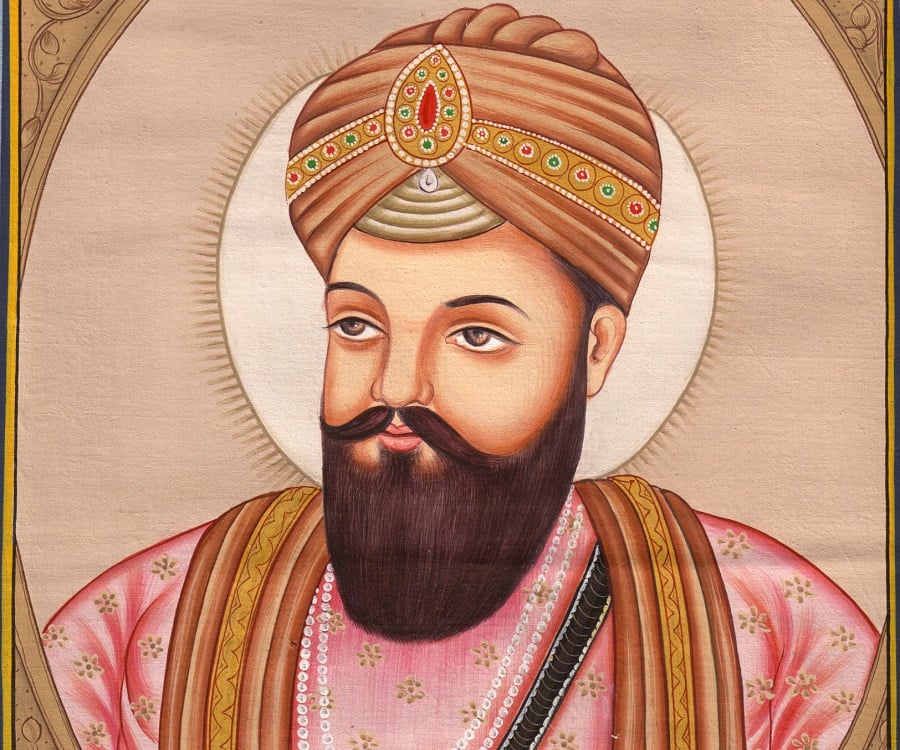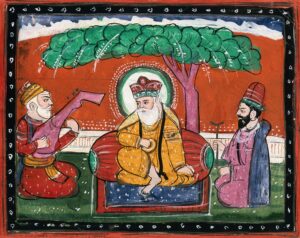Guru Har Rai Ji, the seventh Guru of the Sikhs, was born on January 16, 1630, in Kiratpur Sahib, Punjab. He was the grandson of Guru Hargobind Sahib Ji and the son of Baba Gurditta Ji and Mata Nihal Kaur Ji. From a young age, Guru Har Rai Ji displayed a soft-spoken, kind-hearted, and spiritually inclined nature. Deeply influenced by the teachings of his grandfather, he grew up under Guru Hargobind Ji’s direct guidance and inherited the philosophy of Miri-Piri — combining spiritual depth with awareness of worldly responsibilities.
At the tender age of 14, Guru Har Rai Ji was appointed the seventh Guru by his grandfather in 1644, shortly before Guru Hargobind Ji’s passing. Though he carried forward the legacy of spiritual sovereignty and saint-soldierhood, Guru Har Rai Ji’s leadership was primarily marked by peace, compassion, healing, and humility. He maintained the Sikh army, as per his grandfather’s tradition, but did not engage in military conflict himself. Instead, he focused on internal consolidation of the Sikh community, nurturing spiritual discipline, education, service, and moral integrity.
Guru Har Rai Ji had a deep love for nature and animals. It is said that he maintained a beautiful garden of rare plants and herbs and established a medical herbal dispensary and hospital at Kiratpur Sahib. These herbs were used to treat both Sikhs and non-Sikhs alike. In one significant instance, he provided herbal remedies to treat Mughal prince Dara Shikoh, the eldest son of Emperor Shah Jahan, who was seriously ill. This act of compassion would later attract political attention from the Mughals.
Despite his non-confrontational approach, Guru Har Rai Ji found himself entangled in the Mughal power struggle. When Aurangzeb overthrew and executed his brother Dara Shikoh to become emperor, he viewed Guru Har Rai Ji’s earlier support to Dara as an act of disloyalty. As a result, Aurangzeb summoned the Guru to his court in Delhi. Guru Har Rai Ji, adhering to the Guru tradition of not appearing before tyrants in person, sent his elder son, Ram Rai, as his representative.
However, Ram Rai, in an attempt to appease Aurangzeb, altered a verse from the Adi Granth that the emperor found objectionable. This was considered a grave betrayal of Sikh principles. Guru Har Rai Ji, deeply saddened by his son’s compromise, excommunicated Ram Rai and declared that he had forfeited the right to Guruship. Instead, Guru Har Rai Ji appointed his younger son, Har Krishan Ji, as the next Guru — upholding the spiritual sanctity and authenticity of Sikh teachings.
Guru Har Rai Ji’s time as Guru lasted for 17 years. Though it was a period of relative calm compared to his predecessors, it was crucial in shaping Sikh identity and resilience. He sent out missionaries, strengthened the Manji system (local spiritual districts), and ensured the preservation of Guru Granth Sahib’s original form. His leadership style was gentle, yet firm on principles — guiding Sikhs to live with compassion, honesty, and courage.
Guru Har Rai Ji passed away peacefully on October 6, 1661, at the young age of 31, in Kiratpur Sahib. His death marked the end of a deeply nurturing chapter in Sikh history. He left behind a community spiritually strong and morally uncompromising, and his choice of Guru Har Krishan Ji, a child Guru, symbolized the divine light transcending age or worldly stature.















 Beyond its religious functions, the Gurdwara serves as a hub for community activities, bringing together the Sikh sangat for prayers, kirtan, and community events. The Gurudwara Baba Deep Singh affiliation underscores its dedication to upholding Sikh principles, contributing to the rich cultural tapestry of the Ganganagar area.
Beyond its religious functions, the Gurdwara serves as a hub for community activities, bringing together the Sikh sangat for prayers, kirtan, and community events. The Gurudwara Baba Deep Singh affiliation underscores its dedication to upholding Sikh principles, contributing to the rich cultural tapestry of the Ganganagar area.